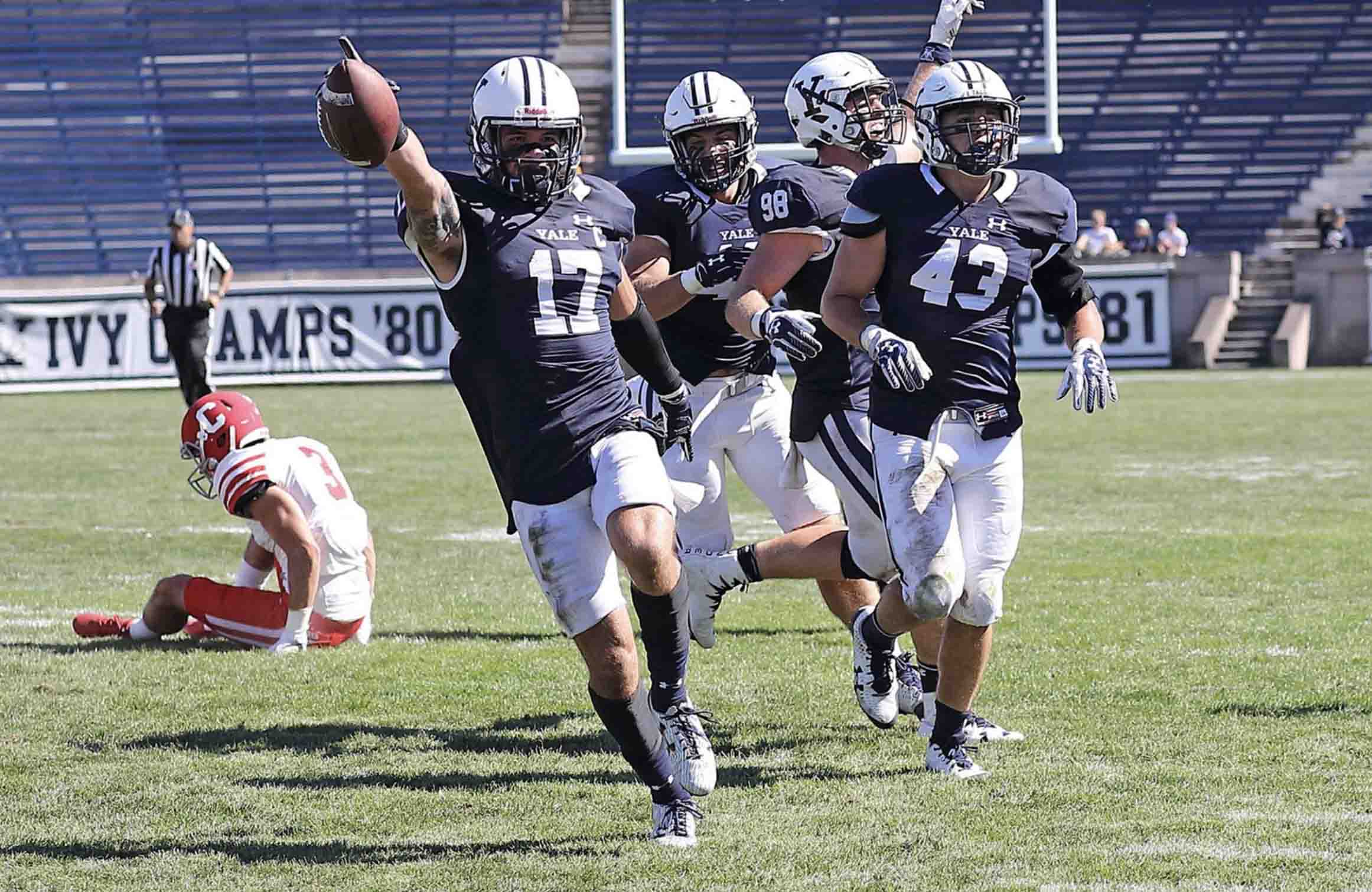
YaleAthletics
In its first two games of the season, the Yale football team has utterly dominated its opposition, scoring at least twice as many points as its competition in both outings.
Still, despite the positive results of the early season, the 2017 Bulldogs (2–0, 0–0 Ivy) have yet to leave the gridiron satisfied. A lack of consistency, coupled with a propensity for giving up long plays and committing hordes of penalties, has lingered for the otherwise successful Elis. A week after giving the Elis’ 56–28 triumph over Lehigh a “C” grade, head coach Tony Reno spoke again about the untapped potential of his team following its 49–24 thumping of Cornell on Saturday.
“We have so much room to grow,” Reno said. “When you look at this team, we’ve fortunately been successful the first two games … We’re better than we’ve ever been, but we’re not as good as we’re going to be. Our goal, as Team 145, is to close that gap.”
On the offensive side of the ball, the combined 105 points in just 120 minutes of play may indicate that the unit has little to tweak. But a closer look at the Eli attack shows that the offense has often been one-dimensional.
The Bulldogs attacked early and often through the air in the opening game against Lehigh. Quarterback Kurt Rawlings ’20 threw for 138 yards and two touchdowns on just seven attempts in the first quarter. However, the Elis could not match this success in the ground game as Rawlings, as well as running backs Zane Dudek ’21 and Deshawn Salter ’18, mustered just 2.3 yards per carry against a Mountain Hawk defensive front determined to plug every gap.
Later in the game, the offense was able to balance the two facets of its attack as it finished with 308 passing yards and 258 rushing yards. Still, Team 145 struggled to find this symmetry the following weekend against Cornell. After an abysmal offensive start to the game that included Rawlings’ first interception of the season, the running game took over for the Bulldogs, resulting in five of the team’s seven scores. At game’s end, the totals stood at 342 rushing yards to just 123 passing yards.
Still, Yale’s offensive imbalance must be understood in context, however. With Dudek leading the Football Championship Subdivision in yards per carry with over 12, few teams would turn to the passing game.
Penalties have also hindered the Elis’ success on both sides of the ball. Yale ranks last out of all 123 FCS teams in fewest penalties per game. The Elis accumulated 24 infractions in their first two contests, totaling 224 yards.
The flags rained down from the first possession on Saturday. Eli pass interference and offsides penalties gifted the Big Red a free set of first downs, which helped Cornell drive down to the goal line early in the contest. In the second quarter, a personal foul call negated an interception by defensive back and captain Spencer Rymiszewski ’18. Although Yale’s offensive and defensive successes have been enough to overcome these penalties against two teams with a combined record of 0–6, such mistakes could prove costly against higher-caliber competition.
Reno said he classifies penalties into two categories — either malicious infractions involving unnecessary violence or penalties of technique — and believes the majority of the Bulldogs’ infractions have been the latter. While the team wants to maintain an aggressive approach on defense, they hope improvements in technique will limit penalties.
“A lot of the coverages we’re running allow you to really play free and play aggressively,” defensive back Hayden Carlson ’18 said. “For instance, we run a doubles concept where if your man goes out you’re allowed to have your eyes free to see the quarterback and use your instincts too in order to break on the ball. We have a lot of good playmakers on defense so our coaches have allowed us to play free and to play fast.”
Big plays, which haunted the Eli defense during its 3–7 campaign a season ago, have also been a weakness for Yale through the first two weeks. So far, the Bulldogs have allowed a 90-yard touchdown run by Cornell running back Harold Coles on a simple inside handoff and a 66-yard reception by Lehigh receiver Gatlin Casey on a coverage breakdown in the secondary. Eliminating these “home run” plays will be crucial to Yale’s conference success versus elite Ivy League offenses such as Penn and Princeton.
“You know there were times when we were spotty and giving up big plays,” Rymiszewski said. “But overall, the way we get to the quarterback helps the secondary a lot.”
The Bulldogs’ specialists have also seen their fair share of struggles. Kicker Alex Galland ’19 missed both of his field goal attempts in the season opener, while punt returner Jason Alessi ’18 muffed a punt in the same game to set Lehigh up with excellent field position. Yale’s net kickoff average also ranks second to last in the conference.
Yale will head to New York to take on Fordham in its penultimate nonconference game this Saturday at 6 p.m.
Won Jung | won.jung@yale.edu
Joey Kamm | joseph.kamm@yale.edu







